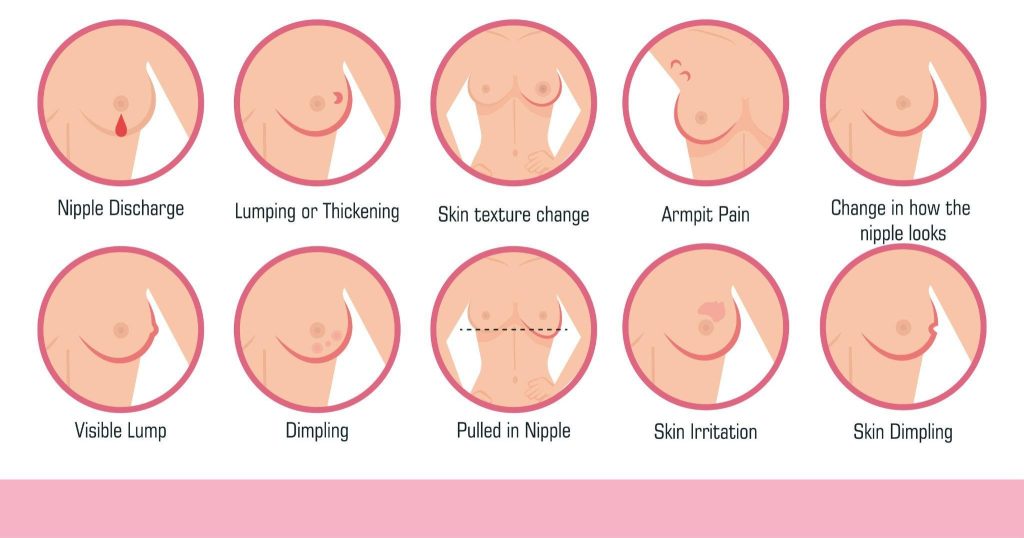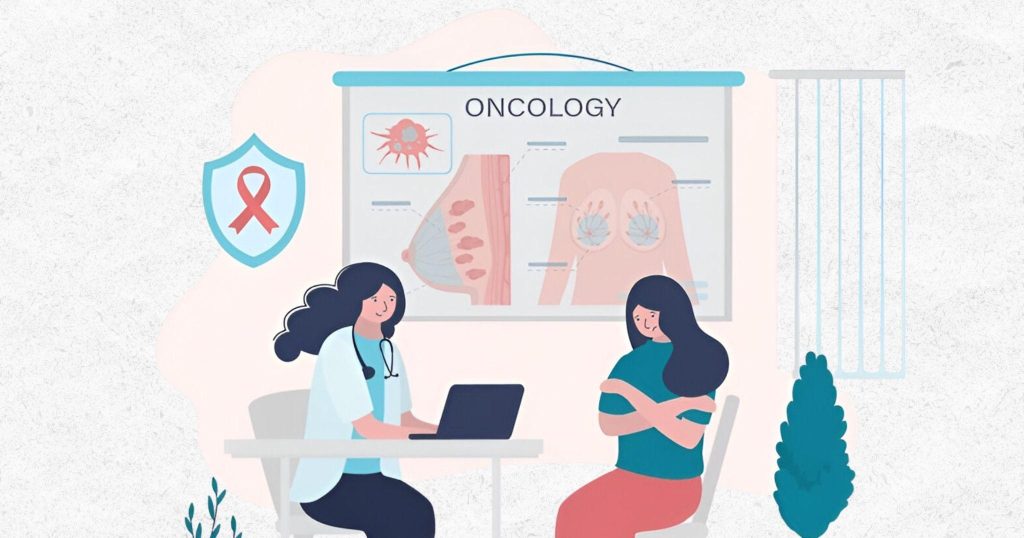Breast cancer has become the most common cancer among Indian women, surpassing cervical cancer in both urban and rural regions. According to the National Cancer Registry Programme (NCRP), India sees over 1.78 lakh new breast cancer cases each year, with the incidence rising steadily, especially in women aged 25 to 50 years.
Globally, breast cancer accounts for over 2.3 million new cases annually, making it the leading cancer diagnosis among women worldwide, as reported by the World Health Organization (WHO).
Despite these alarming numbers, more than 50% of breast cancer cases in India are diagnosed at Stage 3 or 4, when treatment becomes more complicated and outcomes less favorable. The primary reason? Lack of awareness about the early signs and a tendency to delay seeking medical help.
Early detection is the single most effective strategy to improve survival rates. This begins with knowing what to look for, and acting promptly.
Also Read: How Technology Is Transforming Breast Cancer Treatment in 2025
This article breaks down the early signs of breast cancer that every individual should recognize and respond to, especially in the Indian context, where awareness and timely action can quite literally mean the difference between life and loss.

1. Unusual Changes in Breast Appearance or Texture
One of the earliest indicators of breast cancer can be changes in how your breast looks or feels.
What to watch for:
- Dimpling or puckering of the skin, especially when lifting your arms or lying down.
- Thickening in one part of the breast that feels different from the surrounding tissue.
- Swelling of all or part of a breast (even if no distinct lump is felt).
- Changes in size or shape that aren’t related to your menstrual cycle or weight fluctuations.
- Redness or scaliness around the nipple or skin of the breast.
These visual or tactile shifts are often overlooked or attributed to hormonal changes. But persistent or unexplained changes demand attention.
Medical Insight: According to the Indian Council of Medical Research, early-stage breast cancer may not present with a noticeable lump. Relying only on lumps for self-detection can delay diagnosis.
2. Nipple Changes and Unusual Discharge
Your nipples are sensitive indicators. Sudden or persistent changes in them should raise immediate concern.
Warning signs include:
- A nipple turning inward or flattening suddenly (known as nipple retraction)
- Itching, burning, or scaling of the nipple skin
- Discharge that is clear, bloody, or yellowish—especially if it occurs without squeezing
- Crusting or persistent rash around the nipple
Nipple changes are particularly significant when they affect only one breast.
Medical Insight: The nipple-areola complex is anatomically connected to the milk ducts, where most breast cancers begin. Persistent discharge (especially if bloody) from one side is considered a red flag symptom, according to the American Cancer Society and Indian clinical practice guidelines.
Also Read: Breast Cancer Explained: Symptoms, Causes & Treatment
3. Lumps, Hard Knots, or Thick Masses
Not all lumps mean cancer, but all unexplained lumps deserve evaluation.
Key characteristics of concern:
- Firm or hard to the touch
- Irregular in shape
- Not moving freely when pressed
- Painless (contrary to popular belief)
Did you know? In India, nearly 60% of women diagnosed with breast cancer find a lump themselves, but often delay seeking help, thinking it will go away. Early intervention leads to better outcomes.
Medical Insight: Lumps can form anywhere in the breast tissue or even near the armpit where lymph nodes reside. Some benign conditions like cysts or fibroadenomas can mimic lumps, which is why clinical breast exams and imaging tests (like mammography or ultrasound) are vital.
4. Pain or Discomfort That Persists
While breast cancer is often painless in its early stages, persistent or unexplained discomfort shouldn’t be ignored.
Types of pain to note:
- A localized pain that doesn’t go away
- Tingling, burning, or aching without an obvious cause
- A feeling of heaviness or tenderness in one breast
This kind of pain may occur with or without other symptoms. It’s important to differentiate it from cyclical breast pain linked to menstruation, which comes and goes predictably.
Medical Insight: If breast pain lasts for more than a few weeks, especially if it’s in one area or accompanied by other changes, consult a healthcare provider.
Why Early Detection Saves Lives

Breast cancer is highly treatable when caught early. The five-year survival rate for localized breast cancer (before it spreads to lymph nodes or other organs) is over 90%, according to the American Cancer Society (ACS).
However, once it reaches advanced stages (Stage 3 or 4), survival rates drop significantly, and treatment often becomes more aggressive and complex.
Early detection allows for simpler treatments, better outcomes, and in many cases, breast conservation.
Also Read: The Statistical Analysis Of Breast Cancer Cases In Indian Women
Breast Cancer Screening Recommendations by Age
Ages 20–30:
- Self-Exams: Optional but encouraged to become familiar with your normal breast pattern.
- Clinical Breast Exam (CBE): Every 3 years (as per ICMR and WHO guidelines).
Ages 30–39:
- Clinical Breast Exam: Every 1–3 years.
- Risk Assessment: Women with a family history (especially first-degree relatives) should consult a specialist for earlier imaging if needed.
🔹 Ages 40–49:
- Mammogram:
- ICMR recommends annual or biennial mammograms starting at age 40, depending on risk level.
- ACS recommends annual screening from age 45, with the option to start at 40.
🔹 Ages 50–74:
- Mammogram: Every 1–2 years depending on risk, breast density, and clinical history.
Who Needs Earlier or More Frequent Screening?
You may need earlier and more frequent screening (starting before age 40) if you:
- Have a family history of breast or ovarian cancer
- Test positive for BRCA1 or BRCA2 gene mutations
- Have had chest radiation therapy before age 30
- Have dense breast tissue or personal history of benign breast disease
In these cases, your doctor may recommend annual mammograms, breast ultrasound, or MRI.
When in Doubt, Speak Up
Your body is constantly giving you signals. Trust it. If something feels off, don’t wait for pain or confirmation from someone else.
Here’s what you can do today:
- Perform a self-exam monthly, ideally 7–10 days after your period starts
- Schedule regular clinical breast exams
- Keep track of any changes and report them
- Share this knowledge with friends, sisters, daughters, and mothers
Expert Care When You Need It Most

Recognizing early signs is the first step, having access to specialized care completes your protection. At Omega Breast Clinic, Hyderabad’s top breast clinic, a dedicated female-led multidisciplinary team combines clinical expertise with compassionate care.
The Omega Breast Clinic comprehensive team ensures that from initial consultation through treatment and recovery, you receive the highest standard of breast healthcare in a supportive, understanding environment.
Cutting-Edge Technology for Precise Detection
As a top breast cancer hospital in Hyderabad, Omega Breast Clinic offers India’s most advanced diagnostic capabilities. Our AI-assisted mammography technology can detect tumors at Stage Zero, providing unparalleled early detection accuracy.
The clinic features India’s first and only Digital PET-MR mammogram powered by AI, combining PET and MRI for high-accuracy cancer detection and staging. Advanced imaging options include 3D mammography with tomosynthesis for dense breast tissue, radiation-free thermo-mammography, and scintimammography with 91% sensitivity and 93% specificity. Early detection saves lives, and having the right medical team with advanced technology makes all the difference. Whether you’re seeking routine screening, diagnostic evaluation, or specialized treatment, expert breast care specialists understand the unique challenges women face and provide the comprehensive support you deserve during this crucial time.

